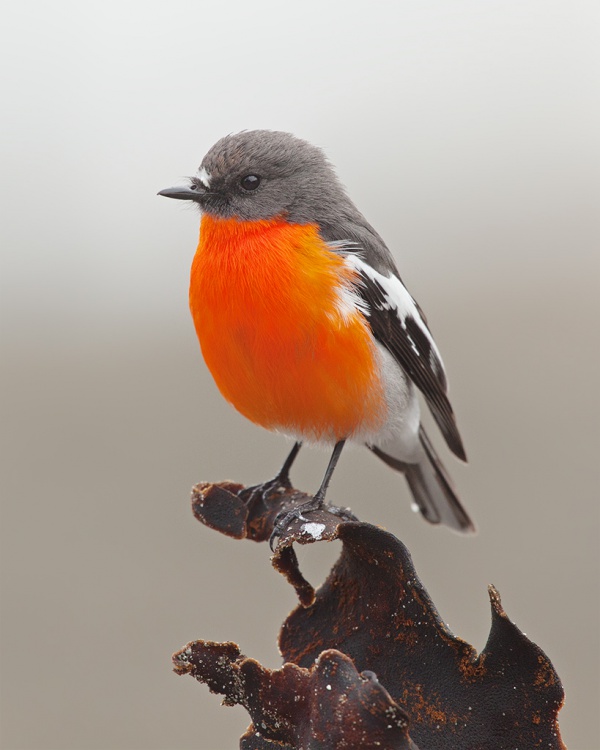Facts About Flame robin
The flame robin is a delightful small bird that resides in the cooler regions of southeastern Australia and Tasmania. Part of the Petroicidae family, these birds are easily identifiable by their pronounced sexual dimorphism: the males display a vibrant orange-red chest and throat, while the females exhibit a more muted grey-brown coloration.
These insectivorous birds are adept at catching insects, either by pouncing from a perch or foraging on the ground. Taxonomically, flame robins represent an early branch of the Passerida group of songbirds. First described by French naturalists in 1830, they were placed in the genus Petroica. Notably, there are no recognized subspecies of the flame robin, likely due to unclear geographic variation.
Flame robins prefer wet eucalypt forests in hilly or mountainous areas and can be found at elevations up to 1,800 meters. Behaviorally, these birds are quite territorial, using their songs and colorful plumage to mark and defend their domains.
Regrettably, the flame robin is classified as Near Threatened, with a significant population decline over the past 25 years. Their breeding season extends from August to January, during which the female constructs the nest and lays three to four eggs. Both parents participate in feeding the altricial chicks, which depend on a diet of insects.
During the breeding season, flame robins are often seen in pairs, but they form loose flocks in the winter. They are particularly attracted to freshly plowed fields, where they feast on a variety of insects and other invertebrates.
